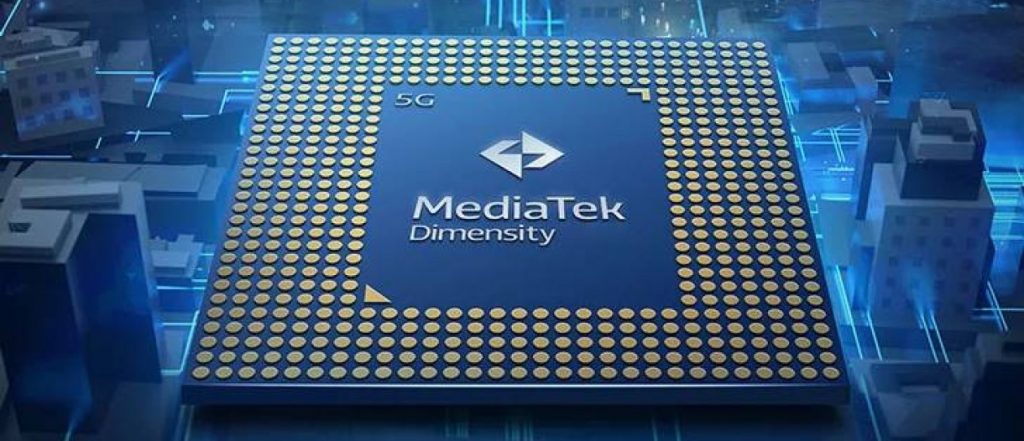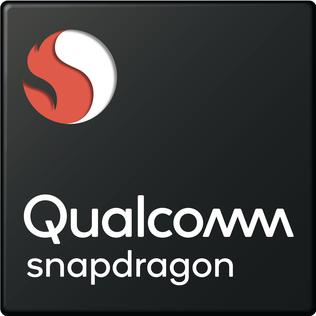Without a doubt, the processors – also known as the brain of a gadget – are one of the most difficult smartphone and tablet themes to carry out all operations. To begin with, calling them “processors” is incorrect because they are much more than that. As a result, manufacturers usually refer to them as SoCs (system on a chip), which better describes their function.
Smartphone users select a device with a processor that provides the ideal balance of performance and power. Qualcomm Inc. and MediaTek Inc. are the two most frequent chipset manufacturers on the market. Both companies are global leaders in terms of market share, accounting for more than half of the smartphone application processor market. Qualcomm supplies the Snapdragon series of chipsets, whilst MediaTek offers the Helio and Dimensity lineups.
However, MediaTek has had more success with its range, gaining market share at the expense of Qualcomm by obtaining design wins with major smartphone manufacturers.
So the question is whether you should go with Qualcomm Snapdragon or MediaTek. We’ve put together a comprehensive comparison of Qualcomm Snapdragon versus MediaTek, outlining the differences, features, and reasons to choose one over the other.
With powerful SoCs, Qualcomm and MediaTek have a long history.
Qualcomm is currently the market leader in smartphone chipsets. Qualcomm’s high-end Snapdragon 8xx series chipsets are used in the greatest Android flagships currently available. After releasing the MediaTek Helio X30 in 2017, MediaTek was forced to abandon the high-end mobile processor category due to Qualcomm’s dominance. It is now attempting to resurface with the Helio G90T. As a result, it has to deal with a lot of bias and is at a disadvantage compared to Qualcomm.
According to Counterpoint, a global analytical organisation, MediaTek’s chipset is used by the majority of smartphone makers to power low-cost smartphones and tablets.
What exactly is MediaTek?
MediaTek Inc., based in Hsinchu, is a Taiwanese fabless semiconductor firm that makes chipsets for televisions, handheld mobile devices such as smartphones and tablet computers, navigation systems, consumer multimedia devices, and other electronic products. A chipset is responsible for everything in a smartphone, from battery life to performance. And MediaTek happens to be the world’s fourth-largest chipmaker.

The basic old chipset is surprisingly versatile: it’s found in smartphones, Android tablets, Smart TVs, Blu-Ray and DVD players, and other devices. MediaTek chipsets are so common that they can be found in one out of every three gadgets on the planet. They strike the ideal balance between performance, energy efficiency, cost, and connection.
MediaTek’s activities can be split into three categories:
- Mobile
- Home
- Automotive
- Mobile: MediaTek gives a smartphone’s CPU a fresh lease of life by making it more responsive to tasks, increasing battery life, and dabbling in AI. Their main goal is to ensure that even mid-tier gadgets have high-end functionality, making great technology accessible to everyone.
- Residence: Smart homes, complete with smart technologies, are all the rage these days. Ultra HD films, amazing sound quality, and high speed are all held together by reliable connectivity. The illusion of sophisticated AI features with the aid of Edge AI, which is no stranger to voice and facial recognition, dynamic intelligence, and much more, makes it even “smarter.”
- Transportation: Self-driving automobiles are considerably closer to reality than, say, dinosaurs, which appear far too fantastical to be true. MediaTek’s next venture is seeking for machine learning, near- and long-range connectivity, and sensor-based automotive solutions.
Furthermore, MediaTek’s recently released Helio G chipsets have raised the bar for gaming in mid-tier smartphones, with capabilities like pose tracking, fluid and dependable connectivity, smarter imaging, uninterrupted gameplay, natural visual quality, and more.
In 2019, MediaTek entered the 5G race with the MediaTek Dimensity 1000 CPU, which features an integrated 5G modem and dual-SIM support for 5G+5G. It’s all set to dissolve the barriers between mobile, house, and automobile into the big web globe.
The biggest advantage of MediaTek over Qualcomm and Exynos is the price, which can be up to two times lower for same performance. The major criticism levelled with MediaTek processors is how quickly they warm up and reach high temperatures.
MediaTek Processor Characteristics
- Some of the features of MediaTek CPUs are as follows:
- The MediaTek chipset is not cheap.
- MediaTek SoCs use more power from the battery.
- Due to the large number of processor cores, it heats up quickly.
- A small graphics chip not made by MediaTek is embedded into its chipset.
- The process power of the MediaTek processor is unrivalled.
- The MediaTek chipset, in general, has more cores per processor.
What is Qualcomm Snapdragon?
Snapdragon is a suite of system on a chip (SoC) semiconductor components for mobile devices that includes a GPU (Graphical Processing Unit), GPS (Global Positioning System), and cellular modem combined into a single package, designed and marketed by Qualcomm Teclogies Inc. It also comes with software that controls graphics, video, and photo-taking. The ARM architecture is used in Snapdragon’s central processing unit (CPU).

Qualcomm also refers to the Snapdragon as a “mobile platform” on several occasions. Snapdragon processors are the most well-known Qualcomm CPUs. Under the 200, 400, 600, 700, and 800 product lines, there are 23 different Snapdragon chipsets ranging from cheap to high-end. In addition to phones, the 400 series is used in smartwatches, while the 602A is designed for automotive electronics.
The quality of the Qualcomm Snapdragon 820 chipset is sufficient to justify Samsung’s departure from its Exynos chipset. Qualcomm presently controls 65 percent of the 4G LTE market in China, where the five top manufacturers primarily employ Qualcomm chips (Xiaomi, Huawei, TCL, ZTE, Lenovo).
Qualcomm Snapdragon Processor Characteristics
- Qualcomm Snapdragon CPUs have the following characteristics:
- The most secure chipsets are Qualcomm Snapdragon.
- Snapdragon SoCs consume very minimal power.
- When compared to MediaTek, it produces less heat.
- This chipset always includes Qualcomm’s Adreno graphics processor.
- The Qualcomm Snapdragon chipset consistently outperforms the competition in benchmark tests.
What Are the Differences Between Snapdragon and MediaTek SoCs?
The following is a concise summary of the differences between Qualcomm Snapdragon and MediaTek:
- Snapdragon and MediaTek’s origins
- Snapdragon and MediaTek processor cores
- Snapdragon and MediaTek CPU and GPU
- Snapdragon and MediaTek battery life
- Performance
- Heating
- Snapdragon and MediaTek prices
Snapdragon and MediaTek’s origins
Qualcomm, a worldwide semiconductor and IT equipment manufacturer with headquarters in San Diego, California, manufactures Snapdragon CPUs (United States). It was established in 1985. MediaTek, on the other hand, is a Taiwanese semiconductor business formed in 1997 with headquarters in Hsinchu.
Snapdragon and MediaTek processor cores
Snapdragon and MediaTek both have many cores (1-2-4-6-8-10). The trial production of MediaTek’s 12-core chipset has begun. However, we should keep in mind that the number of cores in a processor is less significant than what those cores do.
Snapdragon and MediaTek CPU and GPU
When comparing Qualcomm and MediaTek in terms of performance, there is almost no difference in terms of CPU, but it is evident that the Adreno GPU included in all Qualcomm Snapdragon SoCs performs better in terms of graphics. This is particularly apparent in the high-end market. In the mid-range and low-end classes, the gap in GPU performance is less noticeable.
Snapdragon and MediaTek battery life
MediaTek chipsets are infamous for using a lot of power, resulting in a short battery life. Although the business is working to make its processors more energy efficient, it is still lagging behind Qualcomm’s Snapdragon SoCs.
Performance
Multitasking, conducting heavy and strenuous jobs, and gaming all benefit from Qualcomm Snapdragon’s superior performance. MediaTek’s processors, on the other hand, are well-performing, and their extra core processors enable severe and heavy task execution, as well as multitasking.
Heating
In comparison to MediaTek, Qualcomm Snapdragon SoCs are less prone to overheating.
Snapdragon and MediaTek prices
MediaTek chipsets are frequently less expensive than Qualcomm Snapdragon chipsets.
More about Hardware Stuffs
Qualcomm Snapdragon vs MediaTek Conclusion:
In general, both MediaTek and Snapdragon chipsets have high processing power. The differences between Qualcomm Snapdragon and MediaTek chipsets, on the other hand, are largely imitated in terms of battery consumption, i.e. endurance and efficiency.
Snapdragon, in my opinion, is a more powerful and dependable chipset than MediaTek, but MediaTek is a lot more cost-effective option. If day-to-day tasks are your primary concern, Snapdragon is the way to go. The MediaTek Helio G-series chipset is the one to choose for gaming. On the other hand, Snapdragon offers improved stability, GCam support, and Custom ROM support.

